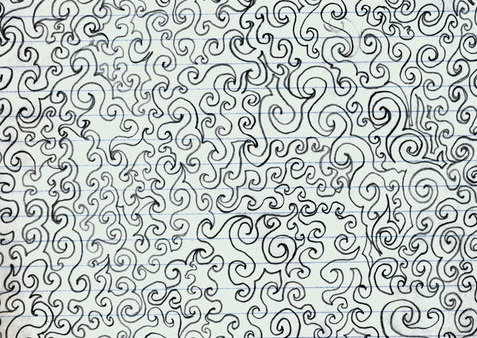
by Mike Coleman | Jan 16, 2015 | Coleman
What is doodling? It has various definitions, but the best one I think is simply this : drawing any kinds of marks in any kind of way, that just feels good, might have no purpose, and might be entirely unrecognizable to someone else! It’s like (nearly) mindless daydreaming or humming or tapping your fingers on a table. But in these activities and doodling, often times, patterns, themes, and repeated symbols form and reappear. And, of course, you can do it with pencil and paper, or with a stylus and tactile drawing sheets. Might doodling be connected to creativity? I have no problem believing that doodling is connected in some way to creativity, to freeing the mind, to opening up brain pathways to better graphical communication and thinking. It feels that way for me, and I am comfortable promoting it that way as a selling point for tactile graphics fluency and tactile graphics tools. But, unfortunately, there is very little scholarly work to show that doodling or sketching is connected to creativity, and no rigorous research that I could find. There is a lot of anecdotal supporting evidence, especially among famous people identified as being creative. (Almost everywhere, doodling is referred to as a visual activity – we need to change that!) This is the only thing I could find, and it is an essay: Schott, G. D. (2011 September) Doodling and the default network of the brain. The Lancet, 378 (9797), 1133-1134. http://www.sciencedirect.com/science/article/pii/S0140673611614967 Quote from the article: “The authors found that doodles were produced during states of idleness, boredom, leisure, meditation, and “affective tension”—indecision, concentration, expectation, and impatience. But...



Recent Comments